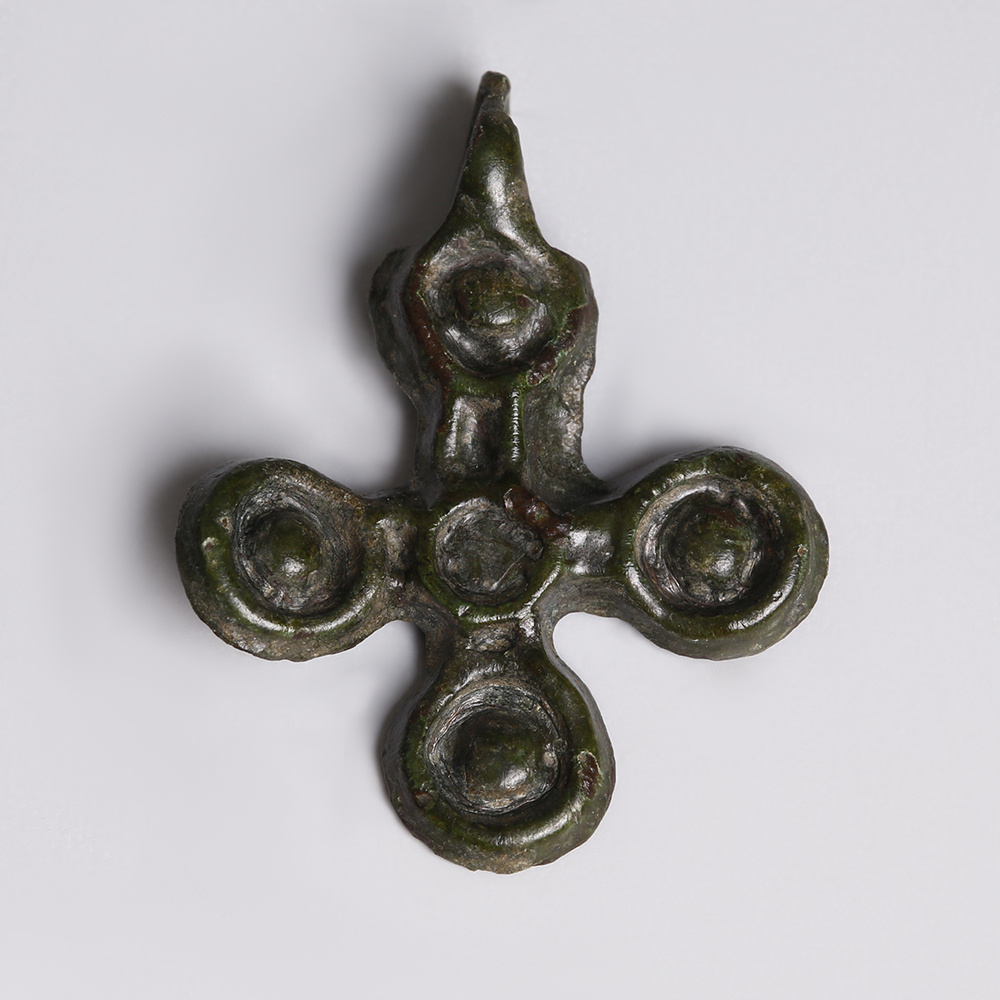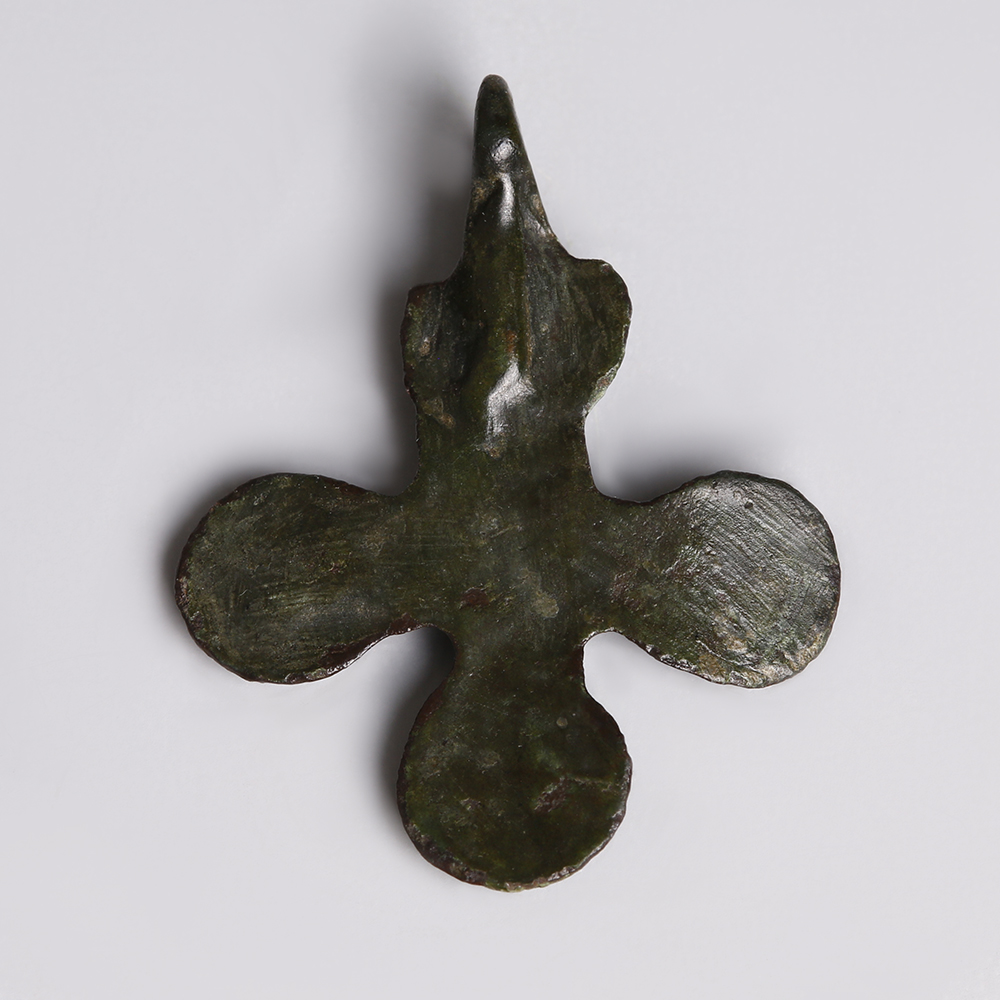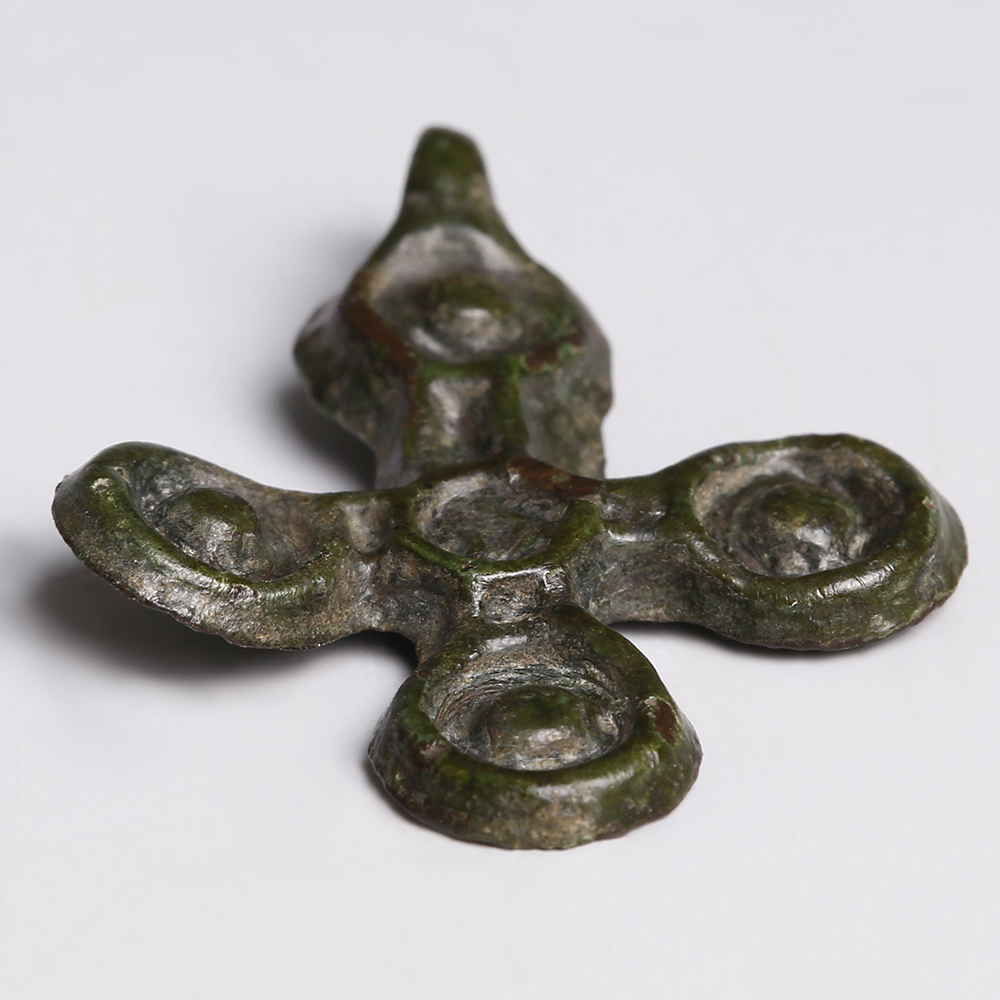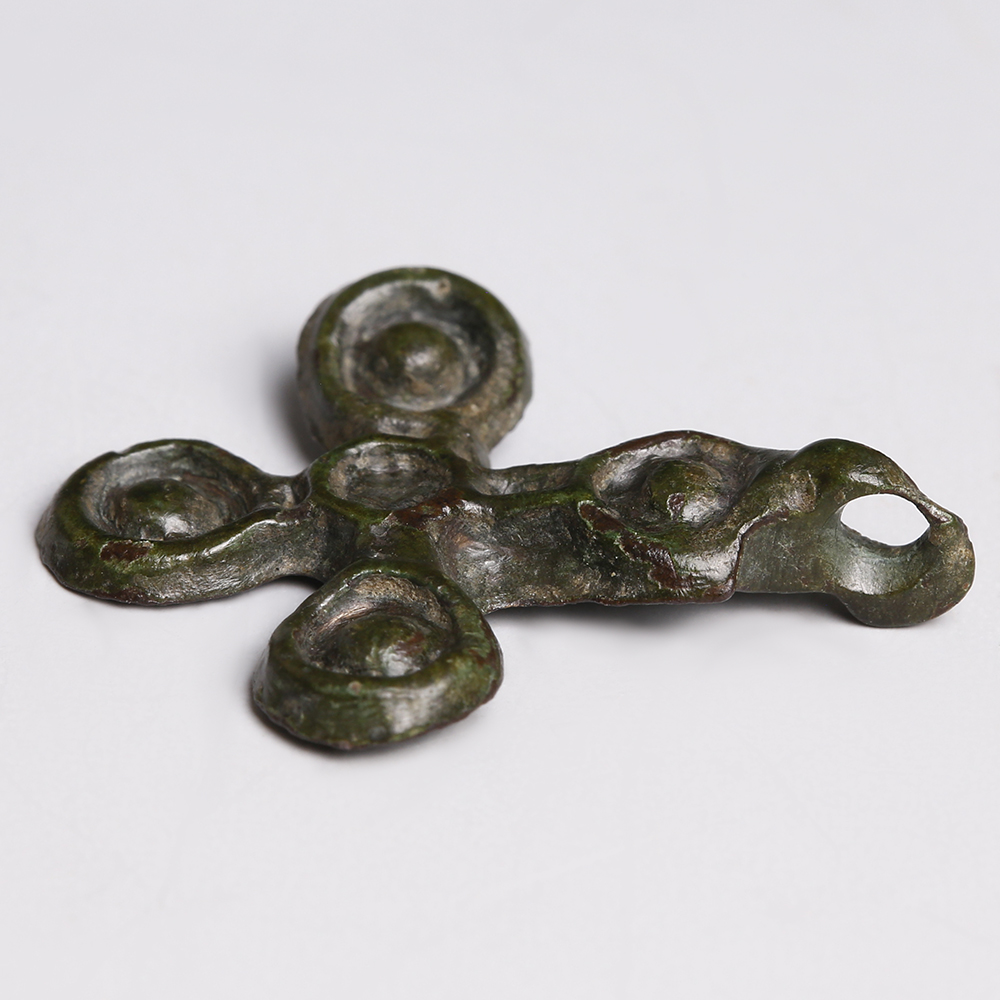During the Roman Empire, Christians were persecuted until the early 4th century AD, with the Great Persecution lasting between 303 and 311 AD. With the Edict of Milan in 313 AD, the emperors Constantine and Licinius granted liberty of cult for all religions, including Christianity. However, it was only in 380 AD, with emperor Theodosius, that Christianity became the only official religion of the Empire. Crosses of this type would have been worn in everyday life but also buried with the deceased to seek salvation in the afterlife.
The custom of wearing devotional items was derived from the Ancient Roman tradition of wearing amulets depicting mythological symbology as protection against incantations. The Church aimed to purify this belief by substituting pagan images with Christian iconography.
To discover more about Byzantine art, please visit our relevant blog post: The Byzantine Empire, Art and Christianity.



